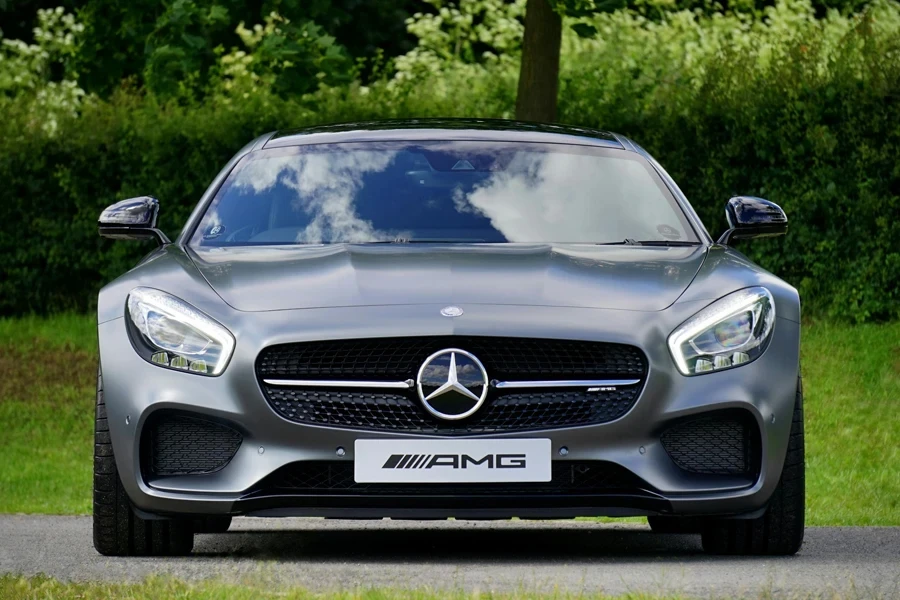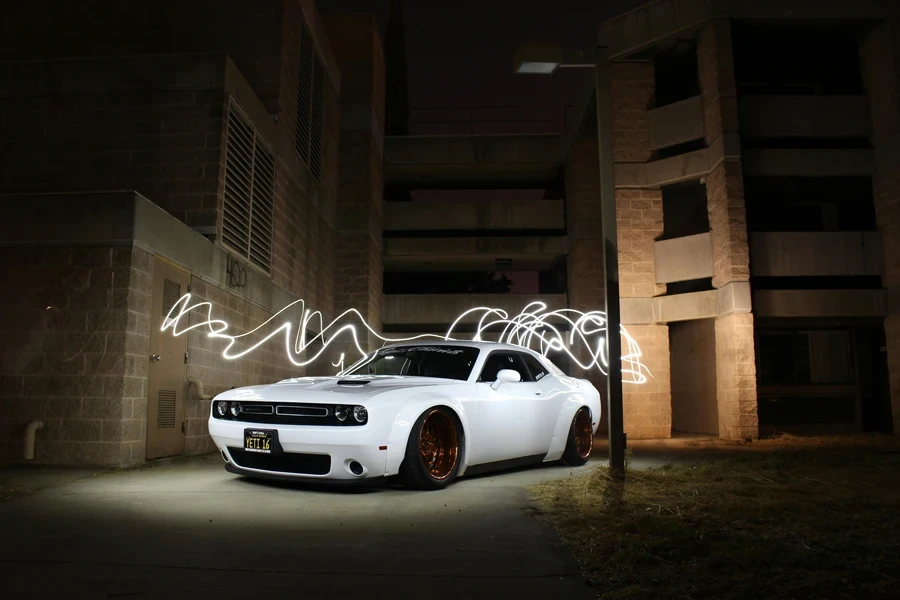Table of Contents
● Introduction
● Market overview
● Different types of new cars and their features
● Key considerations when selecting a new car
● Conclusion
Introduction
When you’re in the market for a new vehicle, the best fit is crucial, and it takes thoughtful planning and consideration to make the right choice. Given the changing market trends and wide range of car options available today, understanding the automotive industry alongside your preferences is essential. Whether you’re looking at the growing popularity of electric cars or the emphasis on fuel efficiency and safety features, choosing the right vehicle means balancing expenses, technology advancements, and long-term benefits. This guide aims to help you navigate these important factors for a well-informed decision-making process

Market overview
The global car market is worth around USD 3 trillion in 2024. It is expected to reach USD 3.97 trillion by 2030, with a 4.42% growth rate annually. This increase is fueled by increased spending on public transportation systems and a growing need for budget-friendly personal vehicles in developing countries. The focus is shifting towards electric cars due to the increasing number of environmentally conscious buyers and the emphasis on cleaner modes of transport. ICE vehicles are still ruling the market because of their established technology and affordability compared to EVs, which are gradually increasing their presence.
In 2023, the rise of electric vehicles has significantly reflected a shift in consumer preferences towards sustainable options. For instance, Ford’s sales of more than 61000 EVs in 2022 indicate this trend is on fire. However, internal combustion engine (ICE) vehicles remain prevalent due to their affordability and the support of the existing infrastructure. Passenger cars hold a presence in the market, with Asia Pacific taking the lead in sales, especially in nations like China and India. The area sees advantages from increased manufacturing capacities and high interest in affordable and high-end cars, greatly aiding market growth.

Different types of new cars and their features
Different kinds of cars cater to varying needs related to sizes, comfort, and usability requirements. Smaller and more convenient hatchbacks are ideal for city areas with limited space as they are easy to navigate in tight spots, which is why urban residents favor them. Moreover, hatchbacks are cheaper and consume less fuel than bigger vehicles, attracting budget-conscious consumers. Sedans offer a blend of luxury and functionality and are great for long-distance trips because they have longer wheelbases that provide extra interior space for comfort during travel. They also come with advanced features that ensure a smooth ride and enhance safety, qualities that professionals and families appreciate. On the other hand, SUVs are known for their larger size and versatility as they can navigate both urban streets and rough terrains effortlessly. They boast bigger cargo rooms and a higher driving position, which appeals to those seeking a commanding presence while driving.
Engine types are another critical factor in choosing a new car, and buyers now have several options to consider. Petrol engines remain the most common, offering smooth performance and a wide range of models. However, diesel engines have traditionally been favored for their superior fuel economy, particularly for long-distance driving, though they are becoming less popular due to stricter emission standards. Electric vehicles (EVs) are rapidly growing in popularity, driven by rising fuel prices and environmental concerns. EVs offer low running costs and zero emissions, making them an attractive option for eco-conscious consumers, though they come with a higher upfront cost. CNG-powered cars are also an option for those looking for cheaper fuel alternatives, particularly in regions where CNG infrastructure is widely available. According to multiple industry reports, the demand for electric and hybrid cars has surged, as manufacturers continue to expand their offerings in response to consumer demand for greener alternatives.
Transmission choices play a key role in driving experience and convenience. Manual transmissions provide greater control over the vehicle, often preferred by enthusiasts or those looking for more engagement with the driving process. However, automatic transmissions, such as CVT (Continuously Variable Transmission), DCT (Dual-Clutch Transmission), and AMT (Automated Manual Transmission), are becoming the go-to choice for most buyers due to their convenience in heavy traffic and ease of use. CVTs are known for their smooth and fuel-efficient operation, while DCTs deliver quick gear shifts and better performance, appealing to those seeking a sportier driving experience. Automated manual transmissions (AMTs) present a cost-effective option by automating gear shifts while preserving the manual transmission structure.

To truly grasp how various car models cater to the requirements of customers in various situations go beyond just looking at the typical vehicle classes. Hatchbacks with their compact size and surprisingly roomy interior allow for flexible seating and storage choices and are a favorite, among drivers and small families seeking a blend of cost-effectiveness and fuel efficiency that also suits urban living well. Several car makers have also launched vehicles equipped with high-end features like touchscreen entertainment systems and advanced driver assistance technologies to cater to the needs of contemporary consumers.
Key considerations when selecting a new car
Choosing a car involves more than just the initial price tag. Factors like budget and ownership expenses also make the decision impactful in the long run. Initial costs aren’t limited to the ex-showroom price; they also include additional charges such as registration fees, taxes, insurance, and dealer handling fees that need consideration upfront. Moreover, studies indicate that ongoing expenses like fuel consumption, maintenance needs, and regular servicing significantly affect the affordability of a car throughout its lifespan. While electric cars may have a high upfront price tag compared to traditional petrol or diesel vehicles, over time, they can lead to savings with lower fuel and maintenance costs as more charging stations become available. Regarding petrol and diesel cars, they may come with low costs but tend to incur higher expenses for fuel and maintenance. Buyers should also consider insurance premiums often elevated for luxury models or vehicles with advanced features.
Cars with better fuel economy reduce the frequency of refueling, leading to significant savings, especially for high-mileage drivers. Petrol and diesel engines traditionally offer different fuel efficiencies, with diesel engines typically providing better mileage on long drives. However, due to regulations regarding emissions and the growing popularity of electric technologies, many more customers are now opting for these alternatives due to their superior efficiency levels. Hybrid vehicles combine gasoline engines’ benefits with those of electric motors to substantially boost fuel efficiency. While electric cars eliminate the need for fuel costs upfront, they may also lead to electricity bills as they require maintenance of charging infrastructure. Several studies suggest that improvements in electric vehicle technology are expected to improve their cost efficiency over time, potentially making them an appealing option for buyers.

Safety features play a significant role in car selection as well. Modern vehicles are equipped with essential features like airbags, anti-lock braking systems (ABS), and electronic stability control, which have become standard in many markets. According to industry data, advanced driver-assist technologies such as blind-spot monitoring, lane-keeping assist, and adaptive cruise control are increasingly common in newer models, providing an additional layer of protection and convenience. These features not only enhance safety but also improve the overall driving experience by reducing the risk of accidents. Buyers should prioritize vehicles with higher safety ratings, as this can also influence insurance premiums and long-term costs.
Considering the trade-in worth is a key factor in choosing a car for those looking to switch to a new one in a few years. Some car brands like Toyota or Honda are known for their reputation as they tend to retain their value well in the resale market. Depreciation rates can differ based on brand reputation, model type, and technological advancements. Cars with safety features or eco-friendly power systems typically hold their value better when resold. In addition, cars that are cheaper to run, like hybrids and electric vehicles, tend to command higher prices when sold again because more people are looking for fuel-eco-friendly options.
Finally, test drives and reliability checks are essential before making any final decisions. A test drive isn’t about assessing comfort and the overall vehicle experience; it’s also a chance to see how it performs in real-world situations like steering responsiveness and braking performance. The ride quality is another aspect to pay attention to during the test drive. Moreover, you should look into the car’s reliability ratings by reading reviews and gathering consumer feedback. This will give you an idea of how durable the vehicle is in the long run and can help you anticipate maintenance costs. Dependable cars are less prone to experiencing failures and requiring repair expenses than cheaper or less tried and tested models, which can offset the initial savings.

Conclusion
Buying a new car in today’s market environment filled with various options to choose from needs keen consideration of your needs, preferences, and budget. There are options like fuel-efficient models with advanced safety features and sustainable electric vehicles that cater to different preferences and financial goals. Whether you go for a hatchback for city driving, a roomy sedan for family outings, or even an environmentally friendly electric car for long-term benefits, the key is to find a vehicle that meets your immediate requirements and provides long-lasting satisfaction and worth in the long run.




